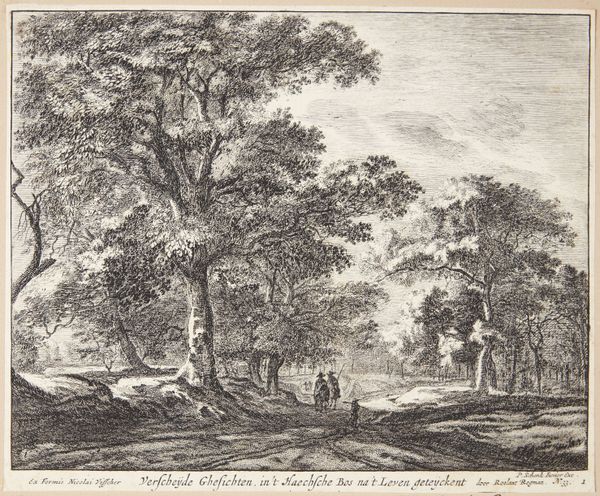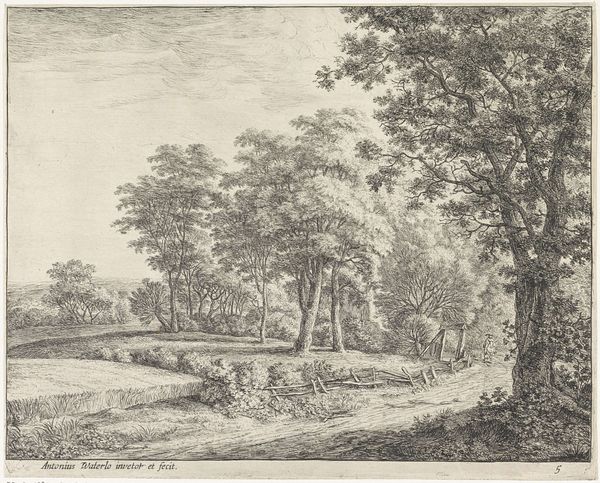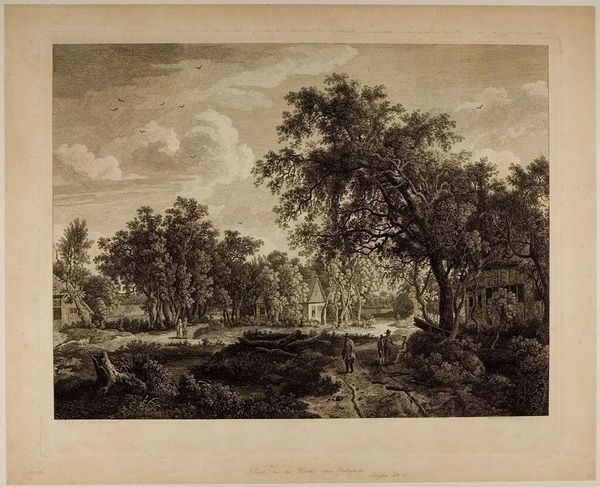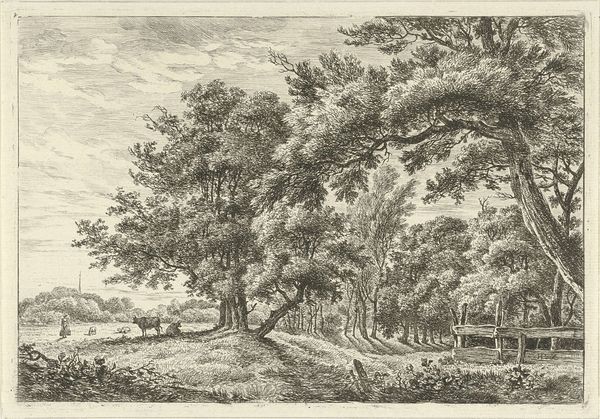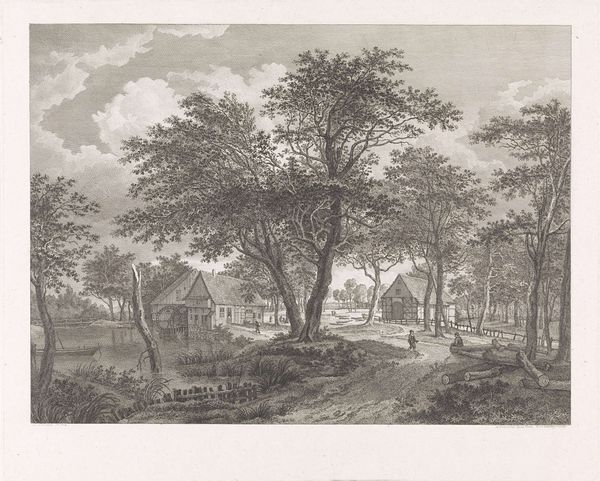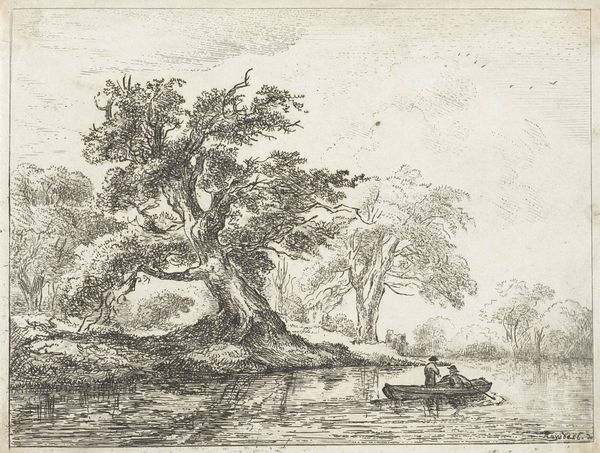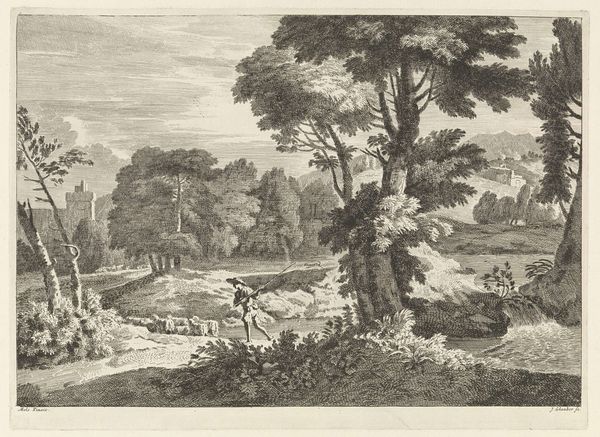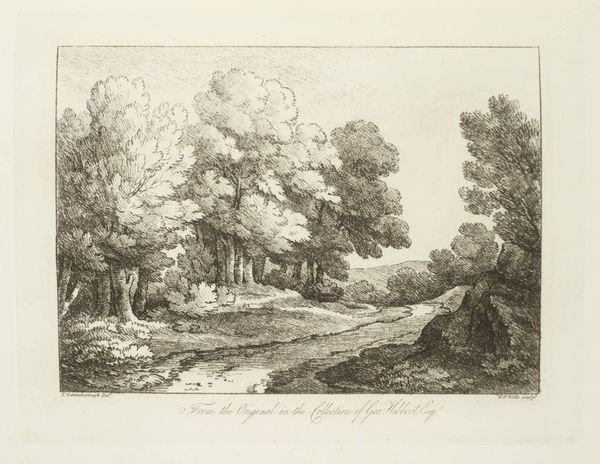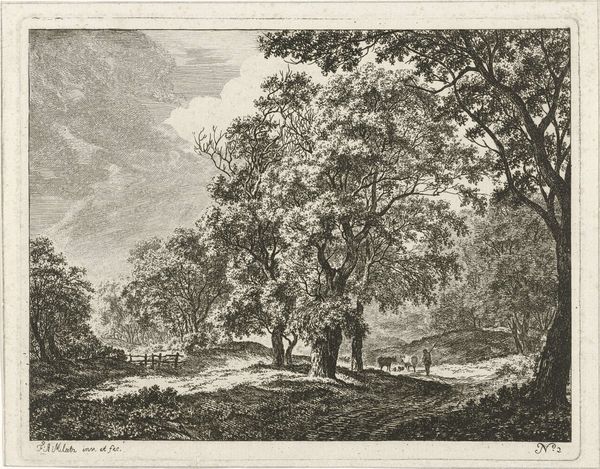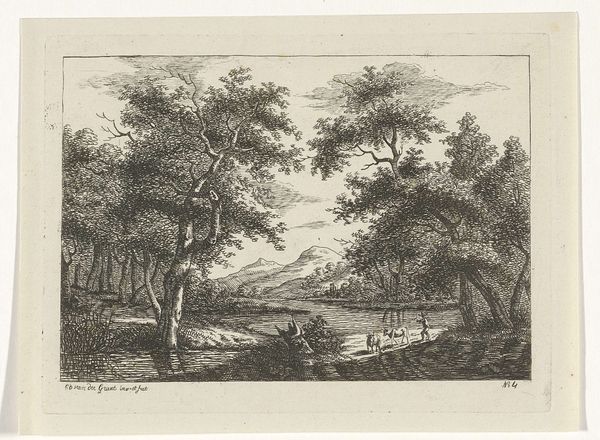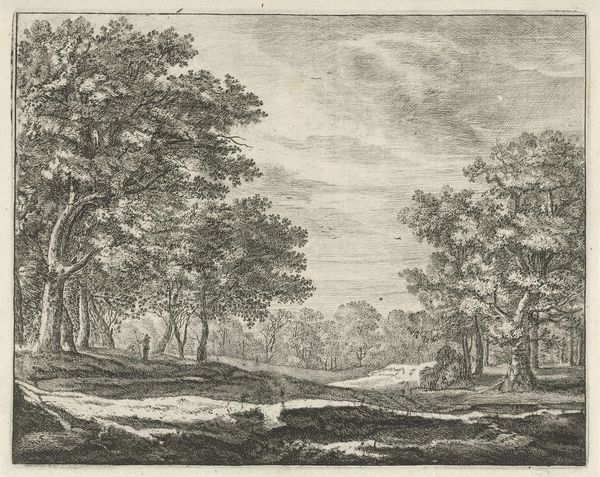
print, engraving
#
dutch-golden-age
# print
#
old engraving style
#
landscape
#
genre-painting
#
engraving
#
realism
Dimensions: height 281 mm, width 396 mm
Copyright: Rijks Museum: Open Domain
Editor: So, this is "Landschap met korenvelden," or "Landscape with Cornfields," by Hendrik Schwegman, dated 1771-1816. It’s a print, an engraving, and what strikes me most is its detailed realism and its peaceful genre scene. What stands out to you as a cultural historian when you look at this work? Curator: What immediately grabs me is how this engraving embodies the Dutch Golden Age's fascination with the everyday. Remember, this was a period where the newly wealthy merchant class wanted art reflecting their world, their values. Schwegman doesn’t depict royalty or biblical scenes; he gives us working people in a humble landscape. Doesn’t it feel almost like a stage set? Editor: Absolutely! I notice the people depicted seem busy at work in this seemingly very peaceful landscape. It does seem constructed in that way. Is there a potential commentary on class structure in a piece like this? Curator: Potentially. Engravings like this served a crucial public role, allowing for mass production and dissemination of images. Think of it as early mass media. These images, carefully curated and circulated, shaped public perception, not necessarily directly criticizing class, but defining a national identity rooted in industry, rural life and perhaps an idealized vision of work. Editor: That makes sense. The availability would shape how people viewed it. Was there anything significant about exhibiting genre paintings as opposed to landscapes with historical or mythical references? Curator: Absolutely. Genre scenes offered a sort of accessible, moralizing content for a growing public viewership, solidifying values of hard work, family, and community. "Landscape with Cornfields" could be understood as reinforcing the cultural value of agrarian life within the expanding urban landscape, giving rural life a sentimental quality, shaping cultural pride and perhaps a shared nostalgia. Editor: So it's not just a picture, it's a statement about what that society valued and wanted to project. Fascinating! I appreciate you pointing that out, and I will definitely consider these things in my future analysis. Curator: Indeed! Art is never created in a vacuum, it exists as a complex conversation reflecting social, cultural and historical forces.
Comments
No comments
Be the first to comment and join the conversation on the ultimate creative platform.

